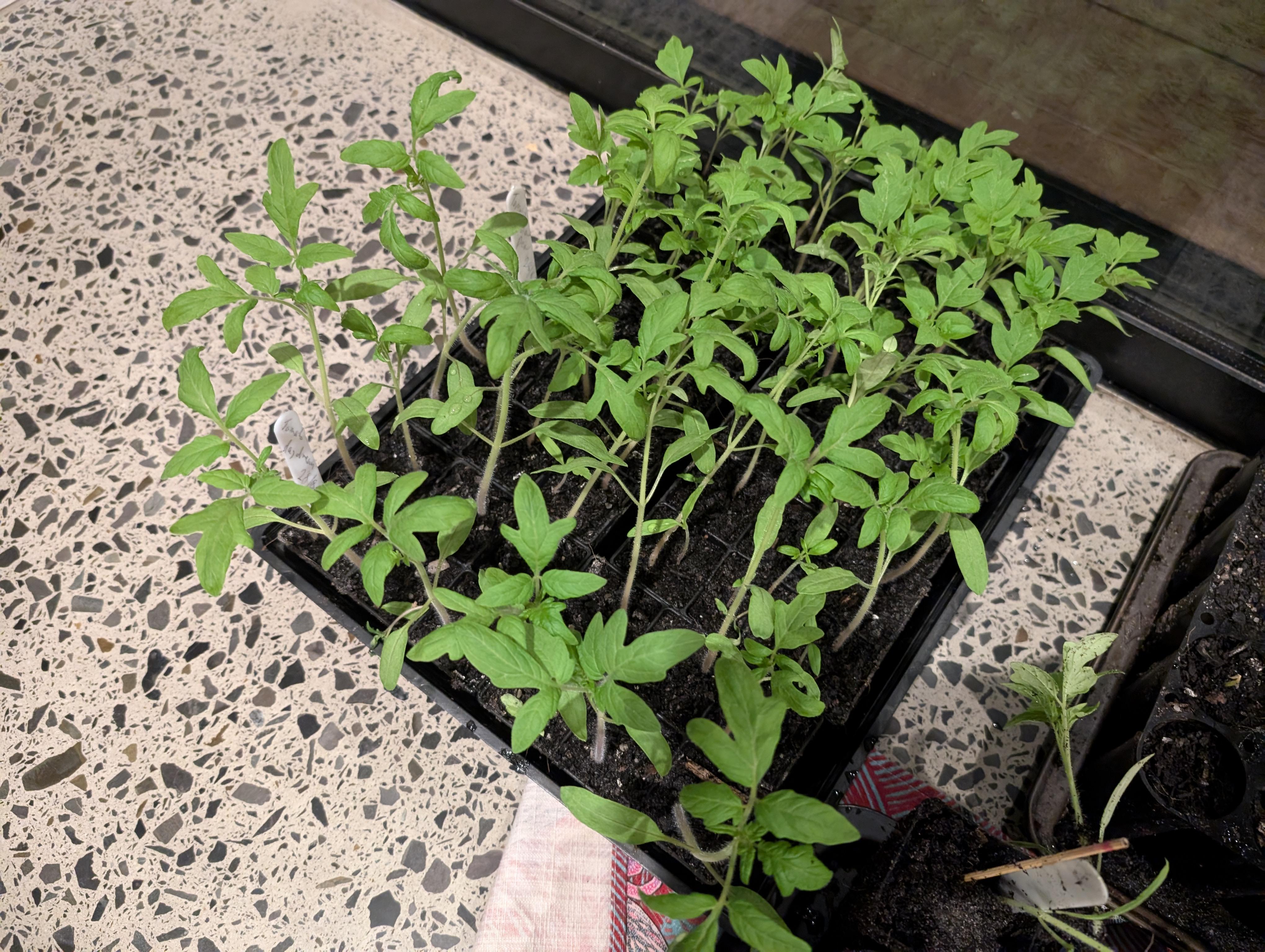
By Josh • Last updated September 24, 2024
The Right Way to Transplant Tomatoes: Debunking Common Myths
Discover the surprising truth about transplanting tomatoes! Learn why sinking them deep isn't always best and how to maximize root growth for healthier plants.
I used to walk my dog every morning with a local plumber. One day, as I was just getting started with gardening, I mentioned I was experimenting with tomatoes from seed. His response? “This late??” It was funny, but it also made me realize how important timing is in gardening. Since then, I’ve become much more in tune with the various aspects of growing tomatoes, from seed starting to transplanting and beyond.
Many gardeners consider tomatoes to be the “gateway” to more serious gardening pursuits. They’re often the first choice for novice gardeners and a staple for seasoned green thumbs alike. But what if I told you that some of the most common practices for transplanting tomatoes might not be as beneficial as we’ve been led to believe?
In this post, we’re going to dig deep into the world of tomato transplanting, challenging some long-held beliefs and uncovering surprising truths. We’ll explore everything from the ideal planting depth to maximizing root growth for healthier, more productive plants.
The Truth About Tomato Plant Hairs
Those tiny hairs on tomato plant stems, called trichomes, have nothing to do with roots! Instead, they serve other important functions:
- Protection for the plant
- Helping with scent production
- Providing shade in some cases
The Real Root of the Matter
Look closely at the stem, and you’ll spot tiny warts or nubs. These are the real deal – adventitious roots just waiting to grow! They’re different from the roots you see at the bottom of the plant and serve mainly as support structures.
The Great Transplanting Debate
The idea of sinking tomatoes deep into the soil comes from a University of Texas study. But here’s the twist – their findings were specific to outdoor planting. The benefits they saw were more about soil temperature than moisture or nutrients.
Planting Methods to Consider:
- Deep planting: Can be beneficial outdoors, especially in certain climates.
- Side planting: Potentially good for water capture, but not ideal in drought conditions.
- Shallow planting: Often overlooked, but potentially the best for maximizing root growth!
The Bumping Up Technique: A New Perspective
When you’re “bumping up” your tomatoes (moving them to larger pots), consider this:
- Roots grow downward, not up.
- The most valuable roots are the fine, white ones with root hairs.
- These roots do the heavy lifting for water and nutrient absorption.
So, what’s the solution? Give those roots room to grow down! Instead of sinking your tomato deep into the new pot, keep it closer to the surface. This way, the plant has the entire container to fill with those nutrient-hungry roots.
Conclusion: Rethinking Tomato Transplanting
It’s time to change our approach to transplanting tomatoes. By understanding the true nature of tomato plant growth, we can provide the best environment for our plants to thrive. Remember, gardening is all about learning and adapting. So, next time you’re potting up those tomatoes, give this method a try. Your plants (and taste buds) will thank you!
Ready to revolutionize your tomato growing game? Give this new transplanting method a shot and share your results in the comments below. And if you’re looking to expand your tomato growing knowledge, check out our comprehensive guide to growing organic tomatoes. Happy gardening, everyone! 🍅🌿